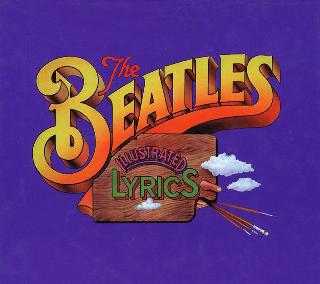Index
Home
Vorige
Why Don't We Do It in the Road
Composer(s) : Lennon and McCartney
Year : 1968
Chords/Tabs: Why Don't We Do It in the Road
Notes on "Why Don't We Do It In The Road?" (WDWDIITR)
KEY D Major
METER 4/4
-- 3X --
FORM Intro -> Refrain (w/complete ending)
GENERAL POINTS OF INTEREST
Style and Form
- This is one of what I call Paul's "bonsai tree" songs; refer back
to our study of "Wild Honey Pie" for an introduction to the concept.
- This particular song features minimalistic (albeit vividly colorful)
content, stick-figure form, outrageous-giddy attitude, and is sequenced
in a context where it provides some kind of comic relief, and pressages
a shift in mood back toward serious, loving intimacy for the last couple
tracks on side 2.
Melody and Harmony
- A self-consciously "heavy" blues flavor dominates both the tune and
the chord choices.
Arrangement
- The backing track of piano, guitar, bass guitar and drum set was
almost completely self-produced by the composer. Detailed instrumental
variations from section to section are neither as dramatic nor as neatly
choreographed as usual, but they are in evidence, nonetheless.
- The intro features a staggered layering of three percussion
elements. Hand banging on the back of an acoustic guitar
leads off, echoed hand claps come in second, and finally the drums,
which have made a furtive appearance just before the clapping
starts, enter in earnest.
- Paul's raucous vocal is recorded close up and "too" loud
to the point of distortion throughout the track. The second
section includes a couple short, intermittent patches of what
sounds like double tracking, and, of course, the final section
opens with some falsetto yelping.
- The guitar part is held in abeyance until measure 13 of second
section, but from there on, it remains a part of the backtrack.
- The bassline features an unvaried thumping on the root notes of
the chords for most of the song, though it shifts to Paul's jumpy,
melodically riffing style in the final section.
SECTION-BY-SECTION WALKTHROUGH
Intro
- The intro is eight measures long with three successive percussion
layers added over the course of the first six, and the stuttering
musical question that gives the song its title filling out the
last two.
Refrain
- The refrain or chorus section is a stretched out classic blues frame;
the tempo is fast, but the harmonic rhythm slowly bides its time.
|D |- |- |- |- |- |- |- |
D: I
|G |- |- |- |D |- |- |- |
V I
|A |- |G |- |D |- |- |- |
V V I
- In contrast to "Rocky Raccoon,"
which finds a way to project a
semblance of normal song form in spite of the fact that each section
is built on the same blueprint, this song wouldn't dream of
trying to disguise its one-track-mind, jam-session gesturing. Of
course it's no random accident, either, that this unvaried chorus
repeats itself three times, precisely. Figure it yourself,
Goldilocks: one or two would be too hot; four or more, too cold;
but three times is "just right."
- The song abruptly ends with a loud, lingering cymbal crash on
the downbeat of measure 21 of the last refrain. Paul cleverly
twists his rhythmic delivery of the song's final line so that
the last word falls with underwhelming syncopation on the beat
just before the final blow; kind of gives you a bit of whiplash.
SOME FINAL THOUGHTS
- The transcendent naughtiness of this song's message could be
said to have been socially redeemed at the time of its initial
release by its cute, tongue-in-cheek delivery.
- By today's very different standards, you might argue that the song
survives by virtue of its being able to balance the same old equation
in *reverse*; i.e. the over-the-top cuteness of delivery is excused
by the underlying willingness to be naughty.
Regards,
Alan (awp@world.std.com)
---
"Hey kids, I've got an idea! Why don't we do the show
right here! " 020898#143
---
Copyright (c) 1995 by Alan W. Pollack
All Rights Reserved
This article may be reproduced, retransmitted, redistributed and
otherwise propagated at will, provided that this notice remains
intact and in place.
Ook op The Beatles [White Album]:
(c) 2024 Serge Girard


 (c) Alan Aldrigde, The Beatles Illustrated Lyrics
(c) Alan Aldrigde, The Beatles Illustrated Lyrics